
We are all aware of the fact that the Sun revolves around the Earth. This leads us to question whether the Sun itself also revolves, and if it does, what does it revolve around? The answer to this query was only obtained by astronomers in the 20th century.
Our star is indeed in motion, and while the Earth has two rotational paths (around the Sun and around its own axis), the Sun has three. Moreover, the entire solar system, including the planets and other celestial bodies, is gradually moving away from the galactic center, shifting several million kilometers with each revolution.
What is the orbit of the Sun?
What is the celestial body around which the Sun revolves? It is common knowledge that our star is situated within the Milky Way galaxy, which spans approximately 30,000 parsecs in diameter. A parsec is a unit of measurement in astronomy that is equivalent to 3.26 light-years.
At the heart of the Milky Way lies a relatively small Galactic Center, measuring approximately 1000 parsecs in radius. This is where the formation of stars continues to occur, and it is also the location of the nucleus that gave rise to our solar system.
The Sun is positioned closer to the edges of the galaxy, approximately 26 thousand light years away from the Galactic Center. Alongside the other stars that compose the Milky Way, it orbits around this central point. Its velocity ranges between 220 and 240 kilometers per second.
An average rotation around the central region of the galaxy lasts for about 200 million years. Throughout its entire lifespan, our planet, in conjunction with the Sun, has completed approximately 30 revolutions around the galactic core.
The exact cause of the Sun’s movement, similar to the rotation of the Earth, remains undetermined. One theory suggests the presence of dark matter, specifically a supermassive black hole, at the center of the galaxy, influencing the rotation and speed of stars. Another theory proposes that gravitational forces originating from the core of the Milky Way are responsible for the movement. Regardless, the Sun, like any object, follows a straight path due to inertia, but the gravitational pull from the Galactic center compels it to orbit in a circular motion.
Is the Sun rotating on its axis?

The rotation of the Sun around its axis is the second orbit it completes. Due to its gaseous composition, the Sun’s movement is differential.
To clarify, the star spins faster at its equator and slower at its poles. Monitoring the Sun’s rotation around its axis is challenging, so scientists rely on observing sunspots.
On average, it takes a sunspot near the solar equator 24.47 days to complete a full revolution around the Sun’s axis and return to its original position. Regions near the poles take approximately 38 days to complete a rotation around the solar axis.
What does rotation around a balanced center mean?
As mentioned earlier, the Sun, unlike the Earth, undergoes rotation on three different planes. The first plane involves rotation around the center of the galaxy, the second plane involves rotation around its own axis. However, the third plane involves rotation around a special point known as the gravitational balanced center. To put it simply, all the planets that orbit the Sun, despite having much less mass, still exert a slight gravitational pull on it.
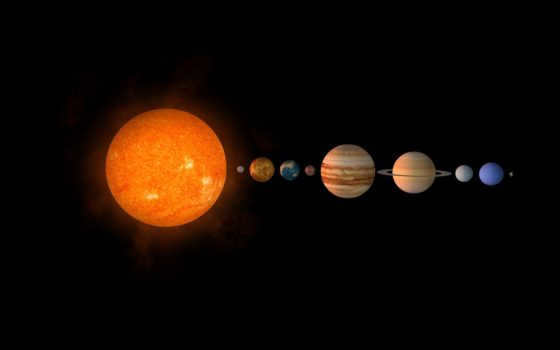
As a result of these processes, the Sun’s axis also undergoes rotation in space. While it rotates, it traces out the radius of the central balance, within which the Sun revolves. Simultaneously, the Sun itself also traces out its own radius. Astronomers have a clear understanding of the overall motion, but the practical aspects remain incompletely understood.
In essence, our star is an exceedingly intricate and diverse system. Consequently, scientists will continue to unravel many more of its enigmas and puzzles in the future.
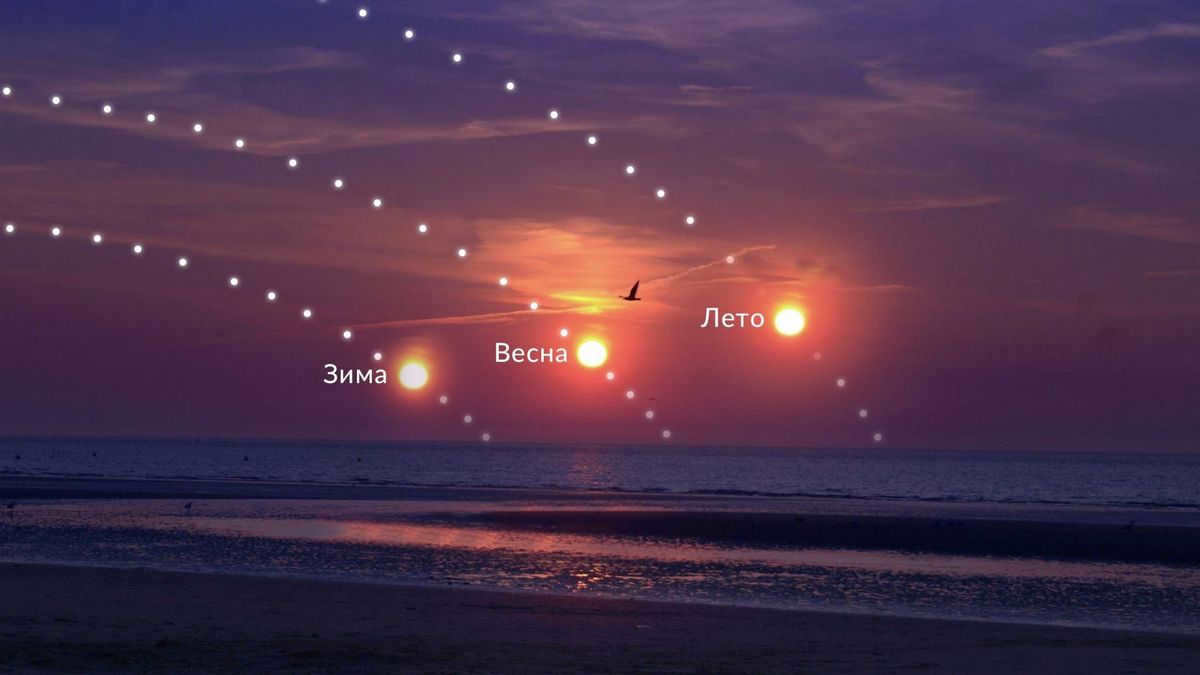
Have you ever observed the golden dotted line that extends across the sky in the astronomy applications Star Walk 2 or Sky Tonight? That is referred to as the ecliptic – one of the most crucial lines in the celestial coordinate system. In this article, we will examine the definition of the ecliptic, its significance, and its connection to zodiacal constellations, processions of planets, eclipses, and other vibrant celestial occurrences.
What does the term “ecliptic” mean?
The term “ecliptic” refers to the path of the Earth’s orbit around the Sun, which can be visualized as an imaginary circle on the celestial sphere or as a plane. Let’s explore the meaning of this astronomical term.
The plane of the Earth’s orbit
As we learned in school, the Earth orbits the Sun, completing one revolution per year. The path that our planet follows during this yearly journey is known as the Earth’s orbit. Furthermore, the Earth’s orbit lies within a specific plane, which is called the plane of the Earth’s orbit.
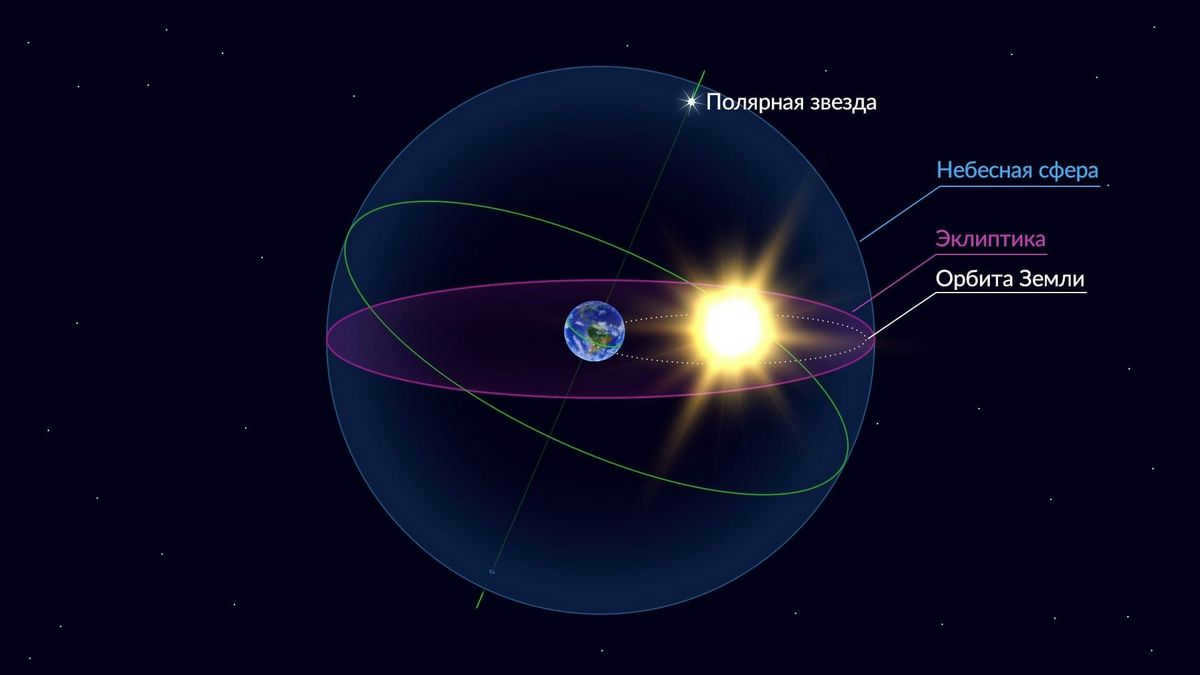
The observable yearly movement of the Sun across the sky
While the Earth revolves around the Sun, our star traverses the ecliptic on the celestial sphere. Throughout the year, the Sun gradually shifts its location in the sky, moving slightly less than 1° per day. It seems to rise higher in the summer and lower in the winter, but ultimately returns to its initial position annually. Thus, the ecliptic also signifies the apparent trajectory of the Sun on the celestial sphere during the span of a year.

What can be observed in the vicinity of the ecliptic?
A majority of objects in our solar system are situated near the plane of the ecliptic. This indicates that they revolve around the Sun in a similar orbit as the Earth.
As a whole, the solar system can be envisioned as the Planets of the Solar System
The planets of our solar system do not lie precisely within the plane of the ecliptic, but rather in close proximity to it. The orbits of the planets deviate from the ecliptic plane by a maximum of a few degrees. Mercury exhibits the greatest deviation (7°); the other planets have deviations ranging from 0.8° to 3.2°.
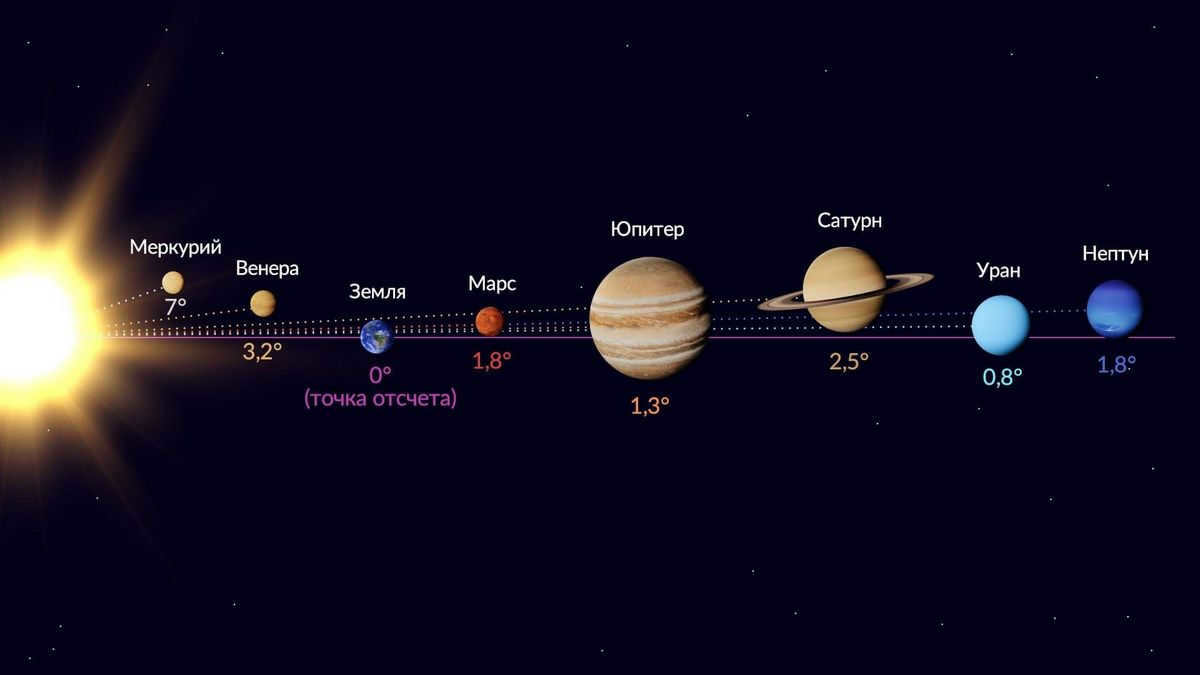
Due to their close proximity to the ecliptic, the planets often intersect in the celestial sphere, providing us with the opportunity to witness fascinating astronomical events. When two planets in our solar system come within a few degrees of each other in the sky, it is referred to as a conjunction. If three or more planets are seen in close proximity within a specific area of the sky, it is known as a planetary alignment.
Are you interested in learning more about the planets in our solar system? Then why not take our quiz and test your knowledge by identifying each planet based on its unique characteristics!

Do you know which celestial body in our solar system has the highest number of satellites? Can you guess which planet offers the most stunning blue sunsets? Test your knowledge with our interactive quiz and discover fascinating facts about the various planets in our solar system.
Luna
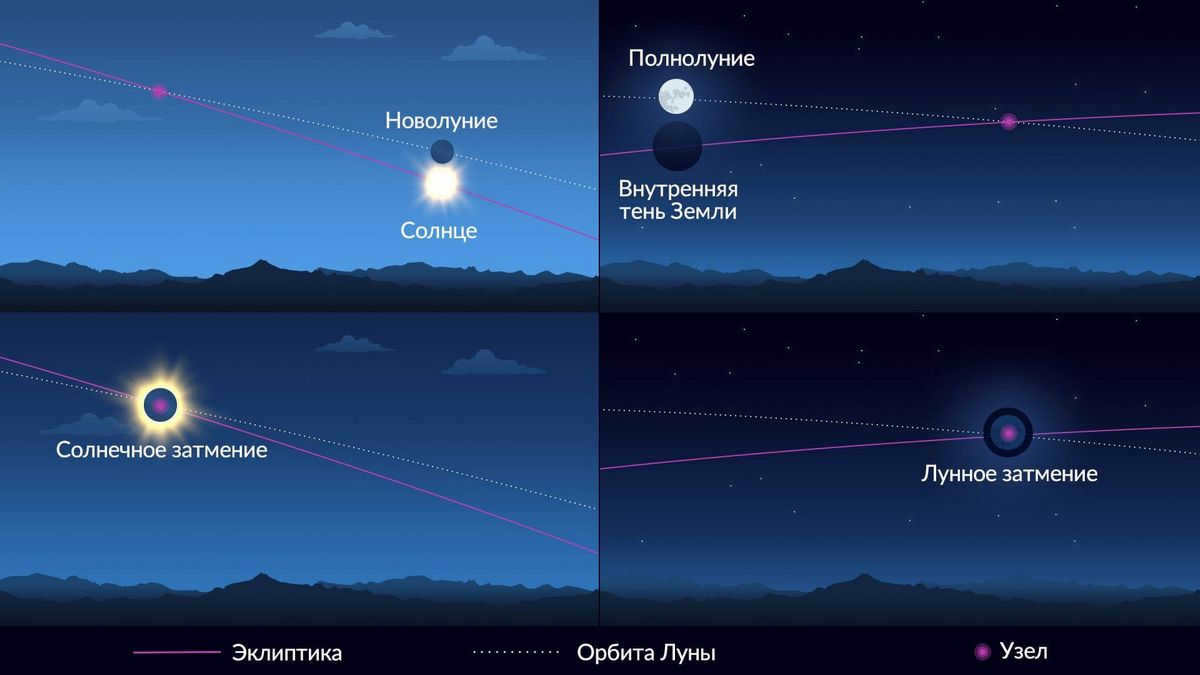
Occasionally, the moon and planets have encounters in the heavens. When our natural satellite and a planet come close to each other in the sky, within a few degrees, it is known as a moon-planet conjunction. On rare occasions, the Moon can even pass in front of a planet, completely covering it from the observer’s view. These events are quite rare and can only be observed from specific locations on Earth.
Small celestial bodies of the Solar System – asteroids, comets, and others
Most of the small celestial bodies in our solar system are situated near the ecliptic plane. For instance, asteroids and dwarf planets from the main asteroid belt and the Kuiper belt are found in this region. However, dwarf planets tend to deviate significantly from the ecliptic plane. For instance, Pluto’s orbit is inclined at an angle of 17.2 degrees to the plane of Earth’s orbit.
Short-period comets, which complete one revolution around the Sun in less than 200 years, also tend to be close to the ecliptic plane. However, this is not the case for all comets. Long-period comets, with orbital periods exceeding 200 years, have random orientations and can be located far away from the ecliptic plane.


Incidentally, are you familiar with the distinction between an asteroid and a comet? Assess your understanding of the celestial bodies in our quiz!


Are you able to distinguish between a meteor and a meteorite? How about a comet and an asteroid? Challenge your knowledge of astronomy with our quiz!
Ecliptic Constellations – Zodiacal Constellations and One “Neglected” Constellation
If you’re interested in delving deeper into the world of zodiacal constellations and their correlation with the signs of the zodiac, we invite you to explore our informative article on the subject.
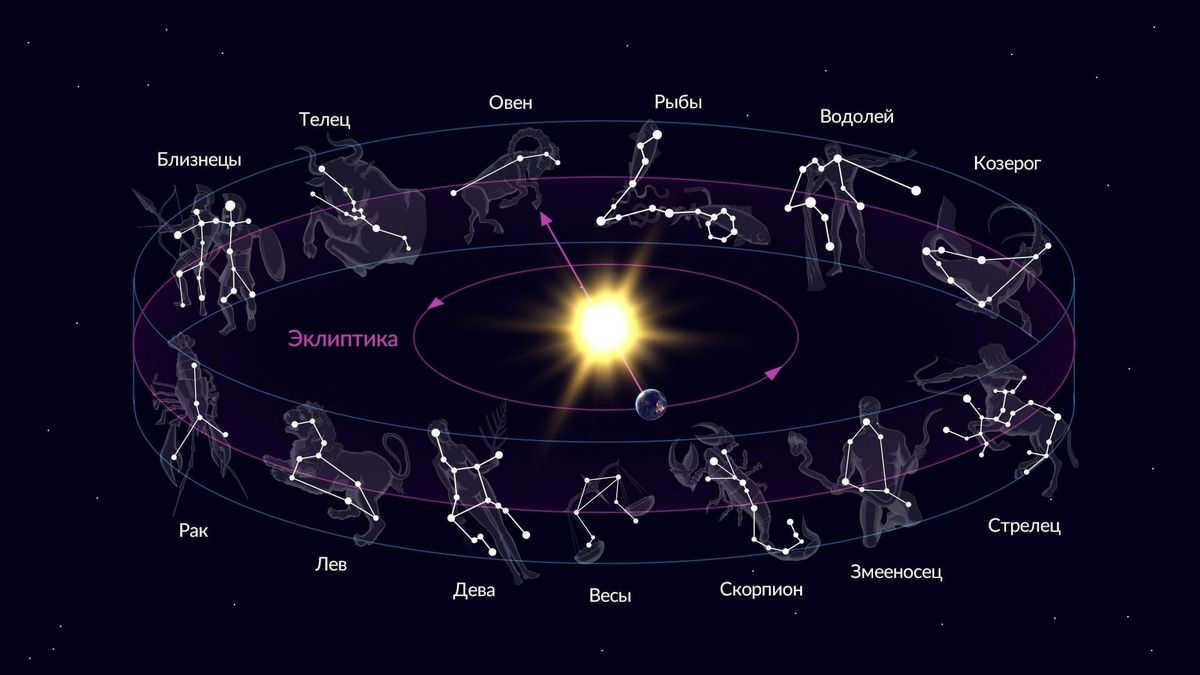
Why is the ecliptic important?
The ecliptic provides a useful tool for locating planets, zodiacal constellations, and small solar system bodies in the night sky. By utilizing astronomy applications such as Star Walk 2 and Sky Tonight, you can observe the ecliptic as a yellow dashed line spanning across the celestial dome. Among the most captivating celestial bodies to be found near the ecliptic are the planets of our solar system. To easily locate them, simply adhere to the uncomplicated instructions outlined below.
Locate planets using the ecliptic with Sky Tonight
In just a few simple steps, the Sky Tonight application can assist you in pinpointing planets in the night sky:
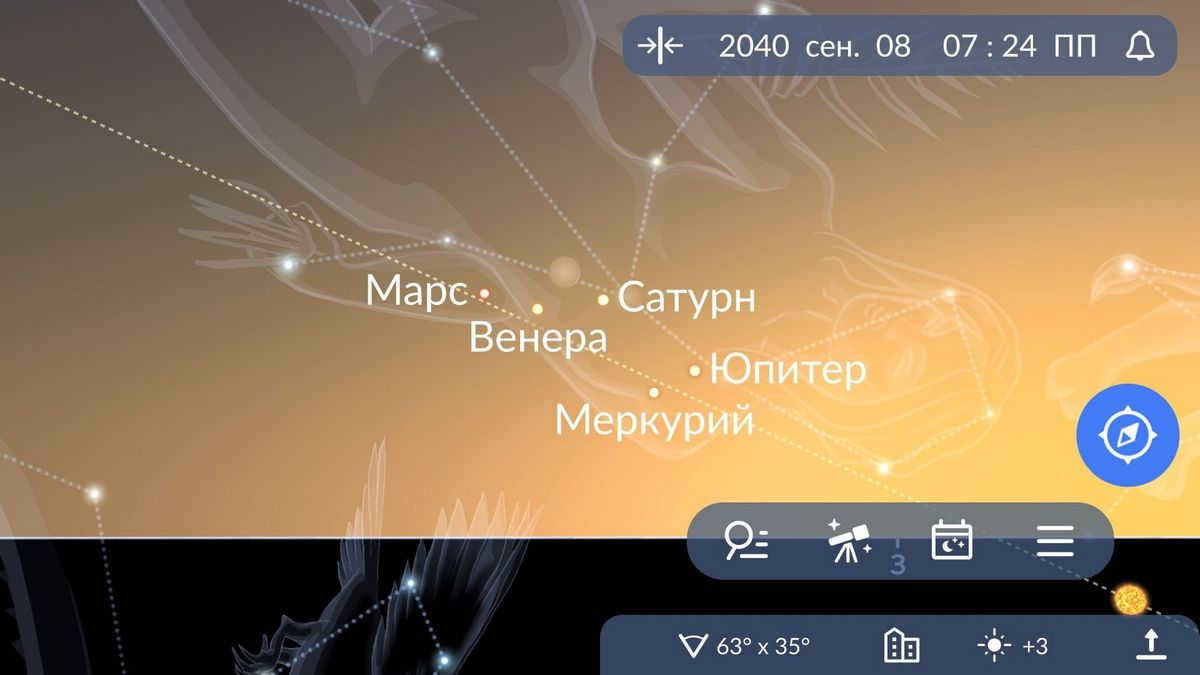
- First step: Open the application and tap on the blue compass icon: the application will utilize your device’s GPS to adjust the on-screen image according to the actual sky above you.
- Second step: Adjust your device until you locate the yellow dotted line displayed on the screen – this line represents the ecliptic.
- Third step: Move your device along this line and you will notice several large dots positioned on the sides of the ecliptic – these dots represent planets.
- Fourth step: By pointing your device towards or touching a planet, you will be able to view its name. You can observe the planets in the real sky in the direction indicated by the application.
Discover planets using the ecliptic in Star Walk 2
Uncovering planets is a breeze with the Star Walk 2 application. To accomplish this, simply tap on the compass symbol located in the upper right corner of your display – the application will automatically calibrate the image to align with the actual sky above you. From there, follow the steps outlined in the previous instructions (steps 2-4) and relish in the wonder of observing the planets.
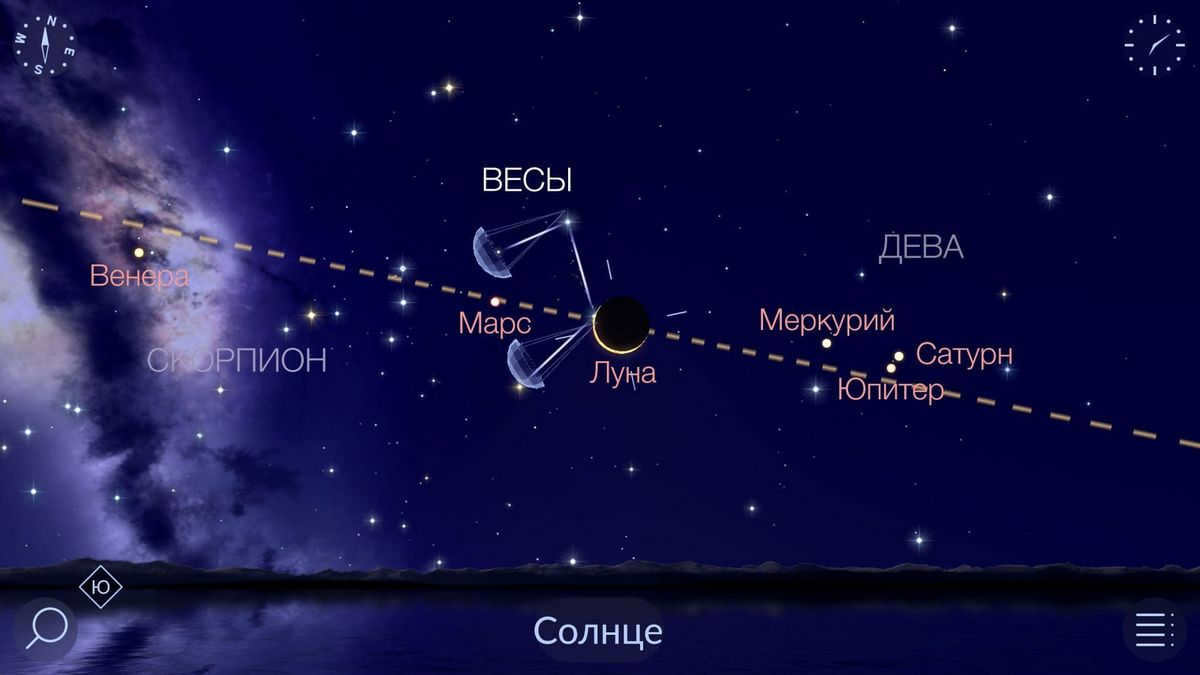
Relation between Ecliptic and Celestial Equator
The celestial equator is the point where the plane of the Earth’s geographic equator intersects the celestial sphere. It is worth mentioning that the celestial equator and ecliptic are not the same.
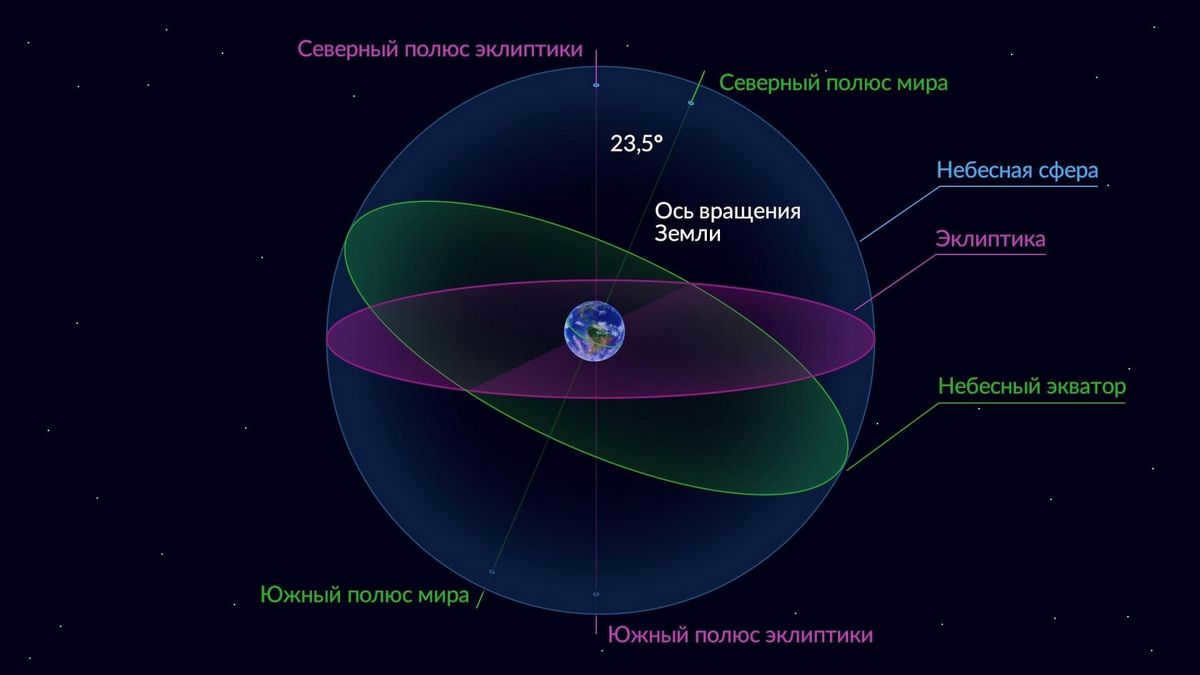
Equinoxes and solstices
The intersection of the celestial equator and the ecliptic on the celestial sphere occurs at two specific points, which are commonly referred to as the equinoxes. These points signify the shift from astronomical summer to autumn (autumnal equinox) and from winter to spring (vernal equinox).

Discover the concept of the equinox and its occurrence through our user-friendly infographic! Explore the transition of seasons and the equilibrium between day and night.
The two significant points along the ecliptic where it deviates the most from the celestial equator are referred to as the solstices. These mark the shift from astronomical autumn to winter (the winter solstice) and from spring to summer (the summer solstice). The hemisphere inclined towards the Sun during one of these points experiences the summer solstice, while the other hemisphere inclined away from the Sun experiences the winter solstice.
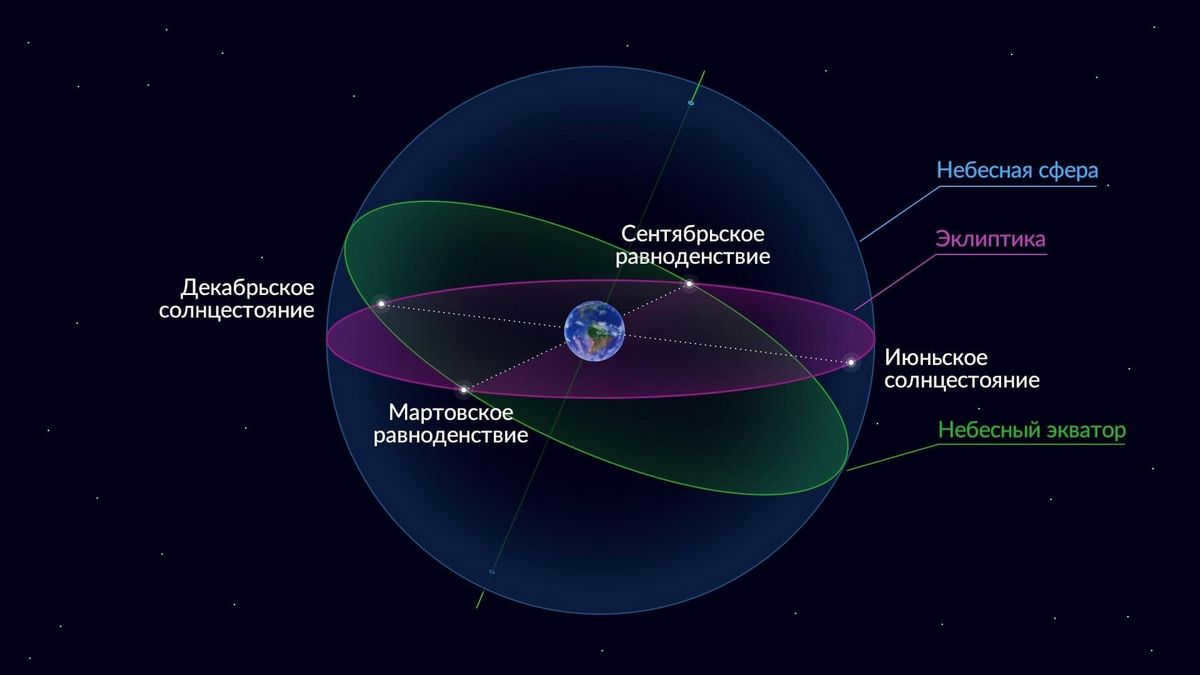
The Earth’s axis moves and the equinoxes progress
The Earth not only tilts in relation to its orbit but also oscillates as it rotates. Picture a spinning top: when it spins slowly, you can observe its tip tracing a small circle in the air as it moves. Similarly, the Earth traces a circle in space with its axis, completing one full circle approximately every 25,800 years. This oscillation of the Earth’s axis is called precession of the Earth’s axis..
Due to the phenomenon of axis precession, there is a slight shift over time in the locations where the celestial equator and ecliptic intersect, which are known as the equinoxes. This shift is referred to as equinox precession. Consequently, the relative position of the Sun in relation to the stars at these points gradually changes.
For instance, approximately 2,000 years ago, during the March equinox, the Sun was situated in the zodiacal constellation of Aries. Consequently, this point was also known as the “First Point of Aries”. However, in present times, the locations where the ecliptic and celestial equator intersect have shifted, and during the March equinox, the Sun “visits” the constellation of Pisces.
The movement of the Earth’s axis causes the fixed position of the world’s north pole to change. At present, Alpha Minor of the Little Bear is the closest star to the world’s north pole and acts as our Polaris. However, in approximately 13,000 years, the star Vega will take over as Polaris due to a shift in the Earth’s axis.
Are you familiar with how to locate Polaris and Vega in the night sky? Put your knowledge to the test with our quiz on the brightest stars and their celestial positions!

Can you identify the whereabouts of Polaris and Sirius? Take this astronomy quiz to test your knowledge! Correctly name all the stars and win a prize!
The Ecliptic Coordinate System
The Ecliptic serves as the foundation for one of the oldest coordinate systems in the field of astronomy. This system was first mentioned by Claudius Ptolemy in his Almagest during the 2nd century AD and continues to be widely utilized today. The Ecliptic Coordinate System is utilized to describe the position and movement of celestial objects within our solar system in relation to the ecliptic. Given that the majority of objects within the solar system orbit close to the ecliptic plane, this coordinate system proves to be incredibly convenient for astronomical observations. Furthermore, unlike the celestial equator, the ecliptic plane remains fixed in outer space and is not influenced by the precession of the Earth’s axis. This makes it a reliable point of reference for astronomers.
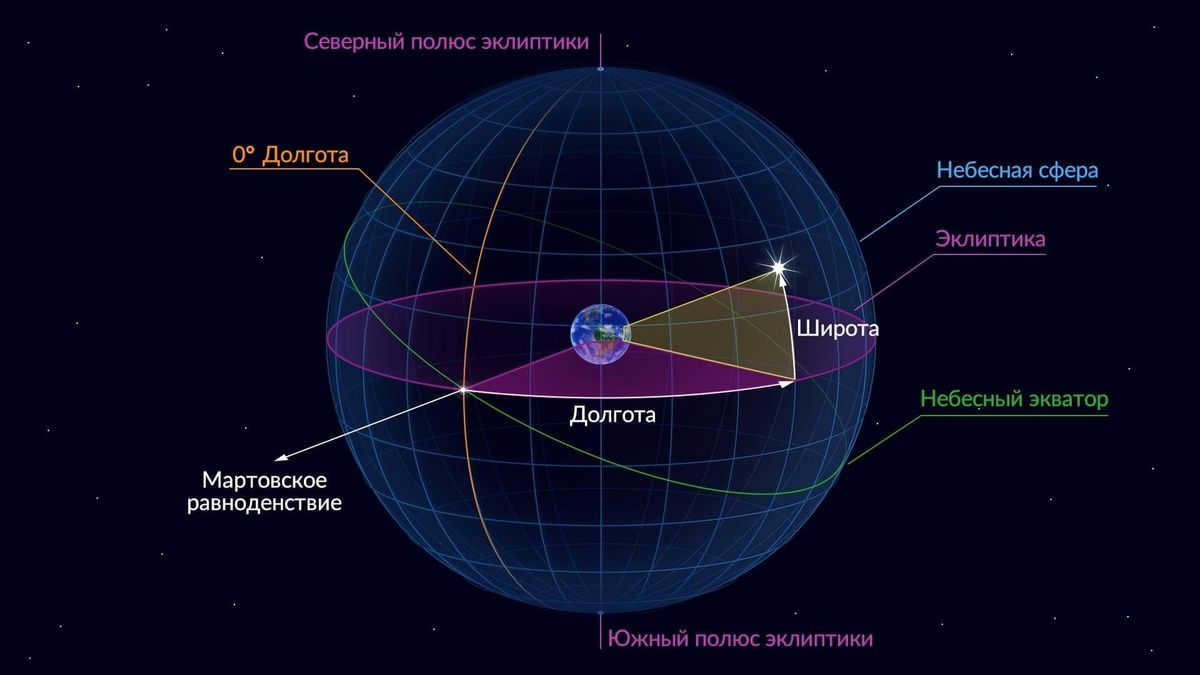
Frequently asked questions
What does the ecliptic represent?
The ecliptic represents the circle where the Earth’s orbit intersects with the celestial sphere. It is the path that the Sun appears to take across the sky throughout the year, as seen from an observer on Earth.
What causes the Sun to appear to move across the sky?
The apparent movement of the Sun across the sky is due to the rotation of the Earth on its axis and its orbit around the Sun. As the Earth completes one full rotation every 24 hours, we observe the Sun rising and setting. Additionally, over the course of 365 days, as the Earth completes its orbit around the Sun, we witness a gradual shift in the Sun’s position in the sky, with it rising higher during the summer and falling lower towards the horizon during the winter.
Do all the planets align in the same plane?
All the planets in our solar system revolve around the Sun in close proximity to a common plane known as the ecliptic plane. While the Earth is the only planet to move precisely within this plane, the orbits of the other planets deviate only slightly from it, by just a few degrees. Consequently, the planets are consistently found within a narrow celestial band, making it possible for them to create stunning planetary alignments.
The term “orbital plane” can refer to the orbit of any celestial object around its star, while the ecliptic plane is the plane of the Earth’s orbit around the Sun.
What is the distinction between the ecliptic and the celestial equator?
The ecliptic is the path on which the plane of Earth’s orbit intersects the celestial sphere. The celestial equator is the path on which the plane of Earth’s geographic equator intersects the celestial sphere. Thus, they are essentially two distinct astronomical terms.
When does the Sun cross the celestial equator?
The Sun passes over the celestial equator two times a year, specifically during the equinoxes of spring and fall.
What is the translation of the word ecliptic?
The word “ecliptic” is derived from the Greek term “ekleipsis”, which can be translated as “disappearance” or “eclipse”. This name was given because ancient astronomers observed that the Sun “disappeared” from the sky at points where its path intersected with the Moon’s orbit. As a result, the Sun’s path in the sky became known as the “ecliptic” due to these occurrences of eclipses.
To sum up
The ecliptic is a significant circle where the Earth’s orbital plane intersects the celestial sphere. It signifies the Sun’s path across the sky throughout the year. It plays a crucial role in astronomy as it helps determine the positions of planets, the Moon, zodiacal constellations, and other celestial bodies within the solar system. Think of the ecliptic as a celestial motorway that can kickstart your journey into the realm of astronomy. Use apps like Sky Tonight or Star Walk 2 to locate the ecliptic and observe it closely, ensuring that you don’t miss any mesmerizing celestial events!

The Sun, like everything else in the world, is in constant motion. Every day, we witness its majestic rise, as it illuminates the world around us. And every evening, it gracefully sets, reclaiming its radiant light. But have you ever wondered how the Sun’s motion and rotation are orchestrated in the vast expanse of the Universe?
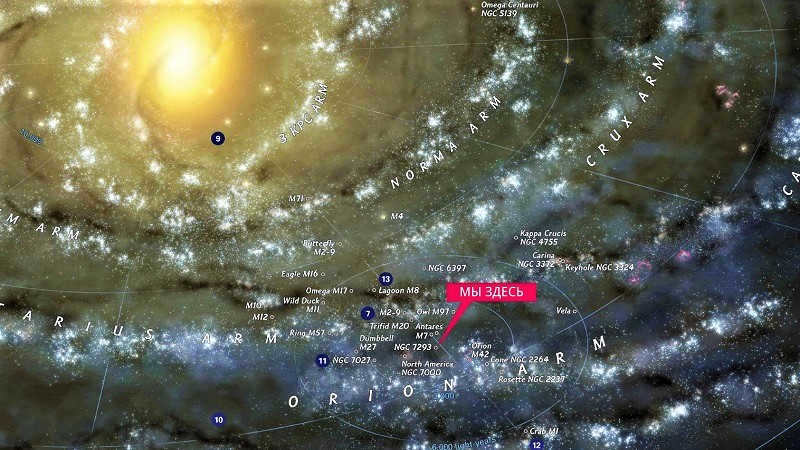
The entire Milky Way galaxy, including our Sun, revolves around a shared center of mass.
It is important to mention that the intricate movement of our Sun and the entire solar system takes place in relation to other celestial bodies in the Universe.
The Sun’s Movement in the Universe
The Sun is in constant motion, following an elliptical orbit around the galaxy. It takes approximately 225-250 million years for the Sun to complete a full revolution. During this journey, the Sun reaches speeds of 220-240 km/s. Interestingly, the direction of its motion is gradually changing over time, and it is currently moving closer to the constellation of the Swan.
In addition to its orbit around the center of the Milky Way, the Sun also crosses the plane of the galaxy every 30-35 million years. This crossing occurs in a cyclical pattern, with the Sun first appearing in the northern hemisphere and then in the southern hemisphere of the galactic system.
Furthermore, the Sun’s movement is not limited to the Milky Way alone. It also participates in the overall motion of the Local Group of galaxies, constantly shifting relative to its center.
Currently, the Sun is traversing through the Local Bubble and the Local Interstellar Cloud, which are regions of rarefied hot gas in the interstellar space.
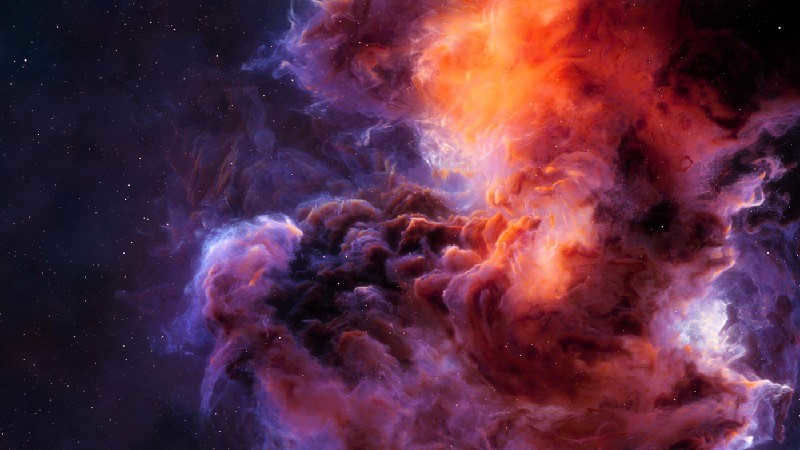
What is the velocity of the Sun’s movement?
Compared to the nearest stars, the Sun’s velocity is approximately 20 km/s towards the direction of the constellation Hercules (equatorial coordinates α = 270°, δ = 30°).
Meanwhile, the Sun’s velocity relative to the galactic center is much higher.
Therefore, the key parameters of the Sun’s orbit are as follows:
- The orbital period or complete revolution of the Sun around the galactic center is 225-250 million years;
- In its orbit around the Milky Way’s center, the velocity is about 2.2×105 m/s;
- And compared to neighboring stars, the velocity is 19.4-20 km/s.
The Sun’s axial rotation
The Sun exhibits a phenomenon known as differential rotation, where various sections of the star rotate at different speeds around a common axis.
Due to its composition of gaseous plasma, different latitudes on the Sun experience varying rotational speeds and periods. Essentially, the rate of rotation is determined by the latitude of the specific location.
The Sun’s fastest rotational speed is observed at its equator, while the speed gradually decreases closer to the poles.
At the equator, the Sun completes one full rotation in approximately 25.38 days, while at the poles it takes around 34.3 days. At latitudes of +8 and -8 degrees, the rotation period is approximately 27 days.
Therefore, a complete rotation around its axis takes 25 days. The velocity of the outer visible layers at the equator is 7284 km/h. This is four times faster than the rotational speed of our planet.

Occasionally, it can be challenging to discover the precise term when seeking an intriguing celestial body in the heavens. Sinonim.org can assist you in this endeavor. The website offers a comprehensive thesaurus of synonyms and antonyms, along with an explanatory dictionary and word analysis tools. The service functions with utmost simplicity – simply input a word, and the phonetic parsing of the word will be readily available.
Incidentally, the ecliptic is the term used to describe the Sun’s perceived movement over the course of a year.
Furthermore, it moves in the same direction as the Earth’s orbit around the Sun, specifically from west to east.
The ecliptic intersects the celestial equator at the vernal and autumnal equinoxes, where the solar declination is 0°.
As is commonly known, the Sun is positioned at these points every year on March 21 and September 23. During this time, the length of day and night are equal. Moreover, the star rises in the east and sets in the west.
The plane of the ecliptic aligns with the plane of the Earth’s orbit.
When we observe the sky, it appears as though the Sun is traversing across it. However, this is actually due to the planet’s rotation around the Sun, not the other way around.
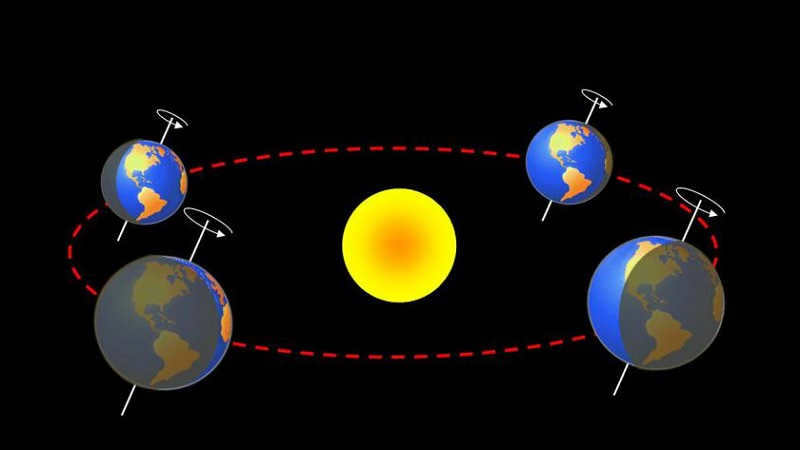

It is important to note that the solstice points, which are 90° away from the equinoxes along the ecliptic, are known as the points of solstice. This position occurs twice annually.
- The summer solstice takes place on June 22nd, when the star reaches its highest position in relation to the celestial equator.
- Conversely, the winter solstice point is at its lowest position on December 22nd.
The movement of the Sun along the ecliptic primarily affects the change in equatorial coordinates and midday altitude points. Additionally, we witness its movement across the horizontal plane of the sky, resulting in sunrise and sunset.
Many of you have probably come across a GIF or watched a video illustrating the motion of the solar system.
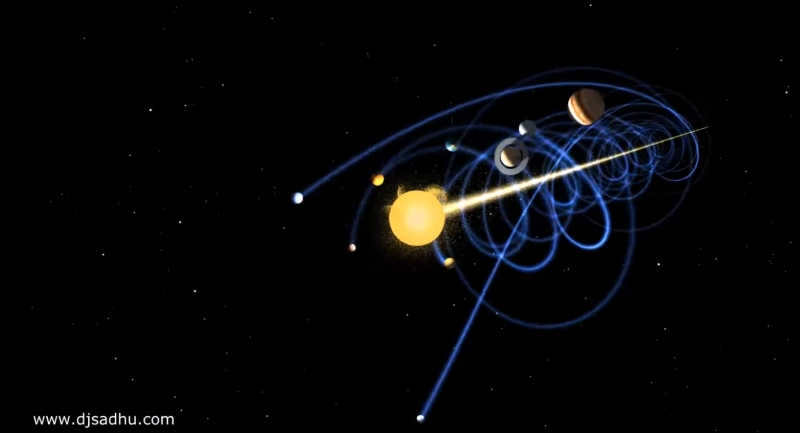
In 2012, a viral video captured my attention and sparked my curiosity about space. At the time, I had limited knowledge about the subject, but one aspect that puzzled me was the perpendicular alignment of the planets’ orbits to the direction of motion. While it is not impossible, it is worth noting that the solar system can move at varying angles to the plane of the Galaxy. You may wonder why I bring up this old story. Well, currently, if the weather permits, anyone can observe the actual angle between the planes of the ecliptic and the Galaxy in the night sky.
Verify researchers
According to astronomy, the inclination of the ecliptic plane and the Galaxy plane is measured at 63 degrees.
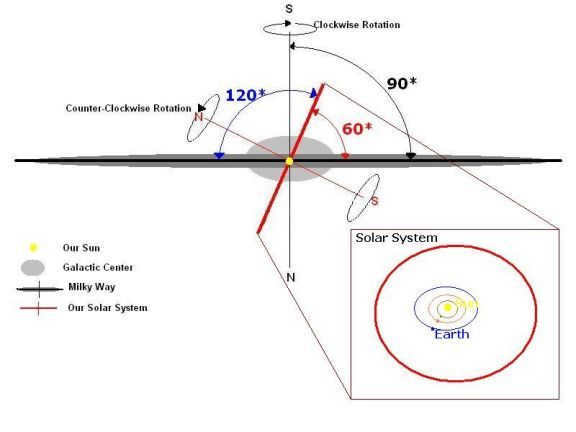
However, the actual diagram is rather dull, and now that the flat Earth believers are gaining popularity on the fringes of science, we would like a straightforward and comprehensible illustration. Let’s brainstorm on how we can observe the planes of the Galaxy and ecliptic in the sky, preferably without the need for telescopes and without venturing too far from urban areas. The plane of the Galaxy corresponds to the Milky Way, but due to the excessive light pollution, it has become increasingly difficult to observe. Is there a line that is relatively close to the plane of the Galaxy? Indeed, there is – it’s the constellation known as the Swan. The Swan is easily visible even within city limits, and locating it is a breeze with the help of its prominent stars: Deneb (the alpha star of the Swan), Vega (the alpha star of Lyra), and Altair (the alpha star of the Eagle). The “torso” of the Swan roughly aligns with the galactic plane.

Alright, we’ve got a single aircraft. However, how can we establish a visual reference to the ecliptic? Let’s consider what the ecliptic represents in a broader sense. By strict definition, the ecliptic is the intersection of the celestial sphere with the plane of the Earth-Moon barycenter’s orbit (center of mass). On average, the Sun moves along the ecliptic, but we don’t have two Suns to conveniently trace a line, and the Swan constellation won’t be visible in sunlight. However, if we take into account that the planets of our solar system also move in a similar plane, we realize that the planetary lineup can give us a good indication of the ecliptic plane. And at this very moment, we can observe Mars, Jupiter, and Saturn in the morning sky, perfectly positioned for our purpose.
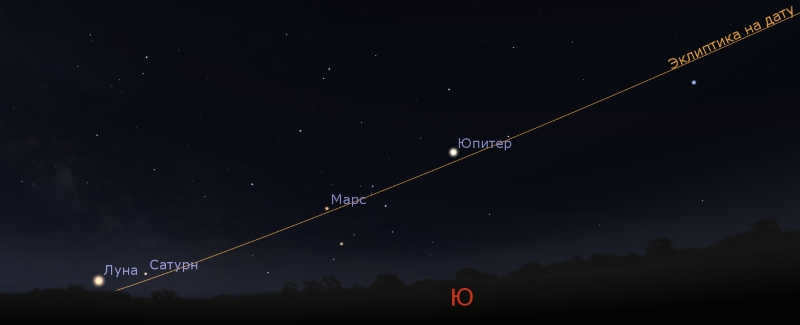
During the next few weeks, it will be possible to observe a stunning scene like the one depicted above every morning before the break of dawn.
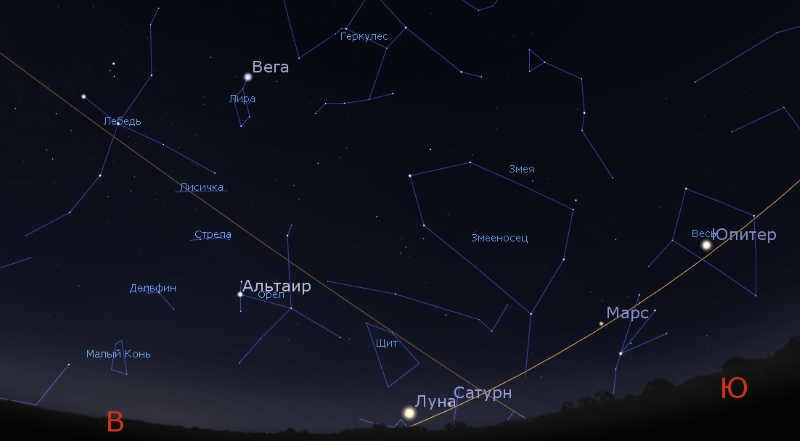
It is quite astonishing that this aligns flawlessly with the content found in astronomy textbooks.
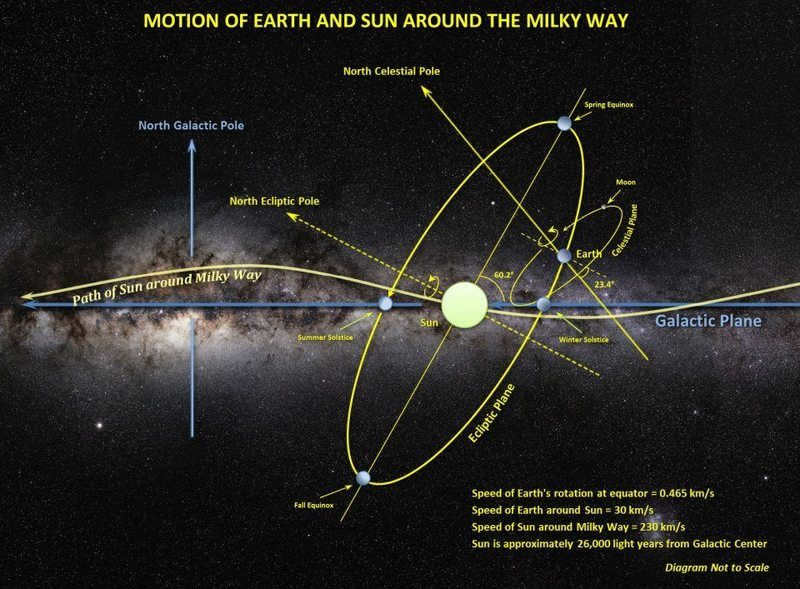
And here’s a more accurate depiction of the gif:
Reference: astronomer Rhys Taylor’s website rhysy.net
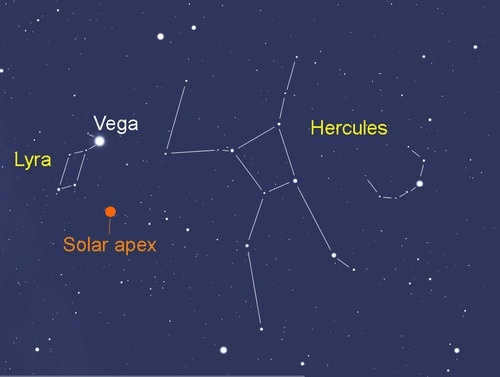
Unfortunately, it is impossible to verify this fact “on the fingers” because, although it was done two hundred and thirty-five years ago, it relied on the results of numerous years of astronomical observations and mathematics.
Stars dispersing
How can we determine the direction of the solar system’s movement relative to nearby stars? By observing the motion of stars across the celestial sphere over a period of several decades, we can identify the direction in which a few stars are moving, which will indicate our own movement relative to them. Let’s refer to the point towards which we are moving as the apex. Stars that are near the apex, as well as those opposite to it (the anti-apex), will exhibit slight movement as they are either approaching or moving away from us. On the other hand, stars that are further away from the apex and anti-apex will have a greater degree of motion. To illustrate this, imagine driving down a road. The traffic lights at the intersections ahead and behind will not appear to move much from side to side. However, the lampposts along the road will appear to flicker or have a noticeable motion outside the window.
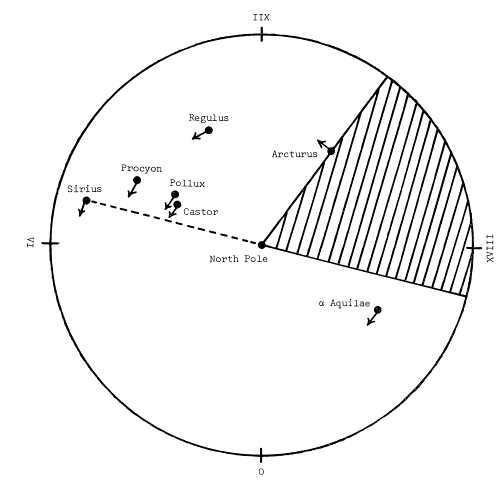
Source: Hoskin, M. Herschel’s Calculation of the Sun’s Apex, Journal for the History of Astronomy, Vol. 11, P. 153, 1980
Furthermore, by incorporating the information from the Lalande catalog, the extent of the region was significantly diminished.
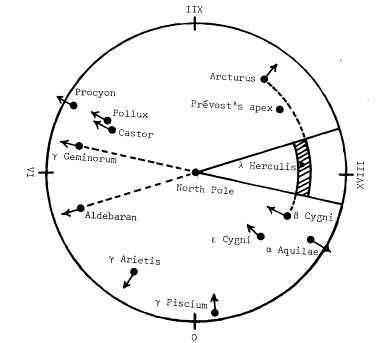
From that point on
Further, regular scientific work was carried out – refining data, performing calculations, and engaging in debates. However, Herschel adhered to the correct principle and made an error of only ten degrees. Ongoing research has continued to gather information, such as the recent discovery that the speed of motion has decreased from 20 to 13 km/s over the past thirty years. It is important to note that this speed should not be confused with the speed of the solar system and other nearby stars in relation to the center of the Galaxy, which is approximately 220 km/s.
Going even further
Now that we have touched upon the velocity of movement in relation to the center of the Galaxy, it is important to comprehend it fully. Just like on Earth, the galactic north pole is determined by convention, chosen arbitrarily. It can be found near the star Arcturus (alpha Volopas), situated in the direction of the wing of the Swan constellation. In fact, the constellations’ projection on the Galaxy’s map appears as follows:

In other words, the solar system is in motion relative to the center of the Galaxy, heading towards the constellation Swan. It is also moving relative to the local stars, towards the constellation Hercules, at an angle of 63° to the galactic plane.
The cosmic tail
The comparison of the solar system to a comet in the video is completely valid. NASA IBEX was specifically designed to study the interaction between the boundary of the solar system and interstellar space. And based on its data, there is indeed a tail.
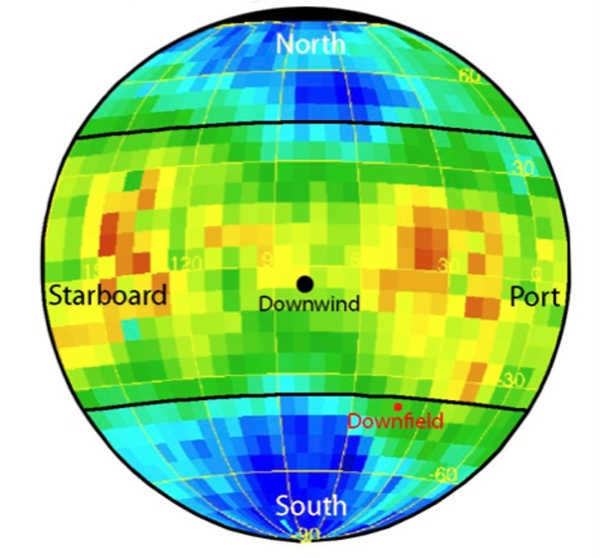
NASA illustration
When it comes to other stars, we have the ability to observe astrospheres, which are essentially bubbles formed by stellar winds.

NASA photo
Ending on a Positive Note
To conclude the discussion, it is important to highlight a truly positive story. DJSadhu, the creator of the original video in 2012, initially promoted something that lacked scientific credibility. However, due to the video’s viral spread, he had the opportunity to engage with actual astronomers (astrophysicist Rhys Tailor expressed great enthusiasm about the dialogue) and, three years later, produced a new video that aligned much more closely with scientific reality, devoid of any anti-scientific claims.
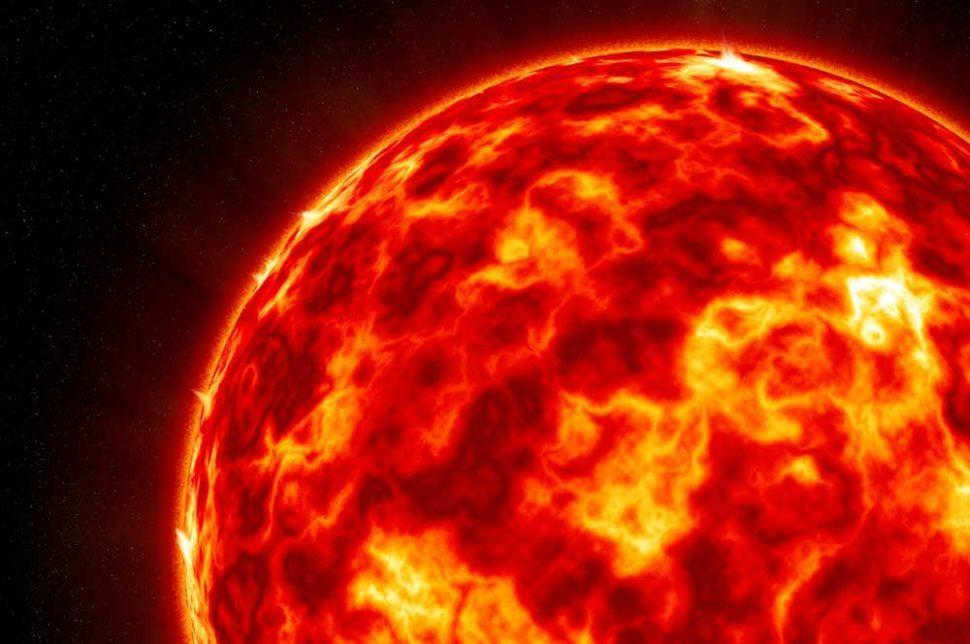
The Sun serves as the primary source of energy for the Earth and the entire solar system, making life as we know it possible. This vital role has led to the Sun being revered as a supreme deity in various ancient civilizations, such as the Egyptians, where it held dominion over all other gods. However, modern scientific advancements have allowed us to gain a deeper understanding of our celestial body, surpassing the myths of ancient times. Through scientific inquiry, we can now explore the inner workings of the Sun, unravel its history, and speculate on its future over billions of years.
General characteristics
The Sun is an enormous ball of gas that is intensely heated, with an estimated diameter of 1.392 million kilometers, which is 109 times larger than our planet. The Sun holds a staggering 99.87% of the total mass of the solar system.
When viewed from Earth, the Sun appears to have a yellow color, but this is an optical illusion caused by the Earth’s atmosphere affecting sunlight. In reality, the Sun emits light that is nearly white.
The Sun is just one of the many billions of stars that exist within the Milky Way galaxy. The closest star to the Sun is Proxima Centauri, located 4.24 light-years away. In comparison, it takes sunlight only 8.32 minutes to travel the distance between the Earth and the Sun, which is known as an astronomical unit (a.u.).
The star generates heat through thermonuclear reactions, specifically the fusion of hydrogen atoms at its core. This process, known as the proton-proton cycle, is responsible for approximately 98% of the Sun’s energy production. In addition to this, there are other reactions within the star where elements like helium, carbon, oxygen, neon, and silicon undergo fusion, leading to the formation of metals such as iron, magnesium, calcium, and nickel, as well as other elements like sulfur. Collectively, these processes are referred to as stellar nucleosynthesis.
The impact of the Sun on the nearby celestial objects is immense. The solar wind, which is made up of particles emitted by the star, dominates the space between planets up to a distance of 100-150 astronomical units. It is believed that the gravitational pull of our star determines the orbits of objects even light-years away, such as those in the Oort cloud.
The Sun itself also undergoes rotation on its axis. Due to its gaseous composition, different layers of the Sun rotate at varying speeds. While the equatorial region completes one revolution in 25 days, the poles take 34 days. Additionally, recent research indicates that the inner regions of the Sun rotate much faster than its outer shell.
Table “Primary physical attributes of the Sun”
| Average diameter | 1,392,000 km |
| Equatorial length | 4,370,000 km |
| Mass | 1.9885-10 30 kg (approximately 333,000 Earth masses) |
| Surface area | 6 trillion km² |
| Volume | 1.41-10 18 km³ |
| Density | 1.409 g/m3 |
| Surface temperature | 6000° C |
| Temperature at the center of the star | 15,700,000° C |
| Rotation period around its axis (at the equator) | 25.05 days |
| Rotation period around its axis (at the poles) | 34.3 days |
| Tilt of the axis of rotation to the ecliptic | 7.25° |
| Minimum distance to the Earth | 147,098,290 km |
| Maximum distance to the Earth | 152,098,232 km |
| Second space velocity | 617 km/s |
| Free fall acceleration | 27.96g |
| Luminosity (radiation power) | 3.828-10 26 W |
The primary components that constitute our star are hydrogen (solar composition: 73.5%) and helium (solar composition: 24.9%). All other elements contribute to approximately 1.5% of the total composition.
The chemical makeup of the celestial body is inherently unstable and undergoes transformations during thermonuclear reactions. During its early stages, the Sun was predominantly comprised of hydrogen. Through thermonuclear reactions, hydrogen is converted into helium, resulting in a decrease in its mass fraction. Additionally, helium undergoes transformations into heavier elements, leading to an overall increase in its fraction. Changes in the chemical composition of stars play a significant role in their evolutionary processes.
The composition of the Sun
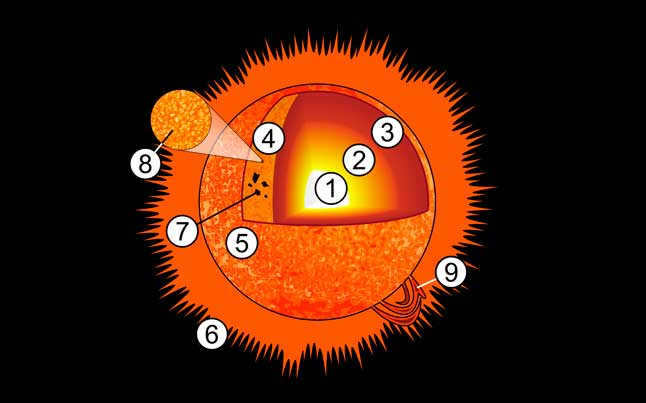
Undoubtedly, the Sun does not possess a typical solid surface, as it is primarily composed of gases. A considerable portion of its composition consists of an atmosphere that becomes more compact as it nears the center of the celestial body. Nevertheless, it is conventionally divided into 6 distinct “layers” that constitute the star. The first three layers are internal, while the remaining three form the solar atmosphere.
Structure of the Sun’s Interior
The Sun’s interior is composed of several distinct layers:
The Core
Situated at the center of the star, the core is where thermonuclear reactions occur. The core has a radius of approximately 150,000 kilometers and maintains a temperature of at least 13.5 million degrees Celsius, with a pressure of around 200 billion atmospheres. These extreme conditions result in a highly dense state of matter, with a density of 150 g/cc, which is 7.5 times greater than that of gold. It is within the core that energy is generated and emitted by the Sun. The other regions of the star rely on the core for heating, as they do not generate energy themselves.
Zone of convective transportation
Located above is the zone of convective transportation, which has a width of 200 thousand kilometers. In this region, the density is already quite low, and the matter is actively mixing – heated gases rise to the top, release heat, cool down, and then descend once again. The speed of gas flows can reach up to 6 km/s. It is precisely this movement that generates the magnetic field of the Sun. The temperature at the surface decreases to 6000° C, and the density is three orders of magnitude lower than that of the Earth’s atmosphere.
Earth’s Atmosphere
The Earth’s atmosphere is composed of several layers:
Troposphere
The lowest layer of the atmosphere is known as the troposphere. It is responsible for weather patterns and contains most of the Earth’s air. The troposphere extends approximately 8 to 15 kilometers above the Earth’s surface.
Chromosphere
The chromosphere, a layer approximately 2000 km thick, exists above the photosphere. Due to its low brightness, it is challenging to observe from Earth, with solar eclipses being the most convenient opportunity to do so. The chromosphere displays a distinct red hue. Within this layer, spicules can be observed, which are plasma columns ejected from the lower regions. Each spicule has a limited lifespan of no more than 10 minutes, yet can reach a length of 20,000 kilometers. It is estimated that around one million spicules coexist within the chromosphere. Interestingly, as altitude increases, the temperature of the chromosphere does not decrease, but rather rises, with the upper boundary reaching temperatures as high as 20,000° C.
Corona
The corona is the outermost layer of the atmosphere, with its exact upper boundary still undefined. Although the matter in it is very sparse, the temperature can soar to several million degrees. The heating mechanisms behind this extreme temperature remain a mystery to scientists. Additionally, the corona exhibits prominences, which are ejections of solar matter that can extend up to 1.7 million kilometers above the star’s surface.
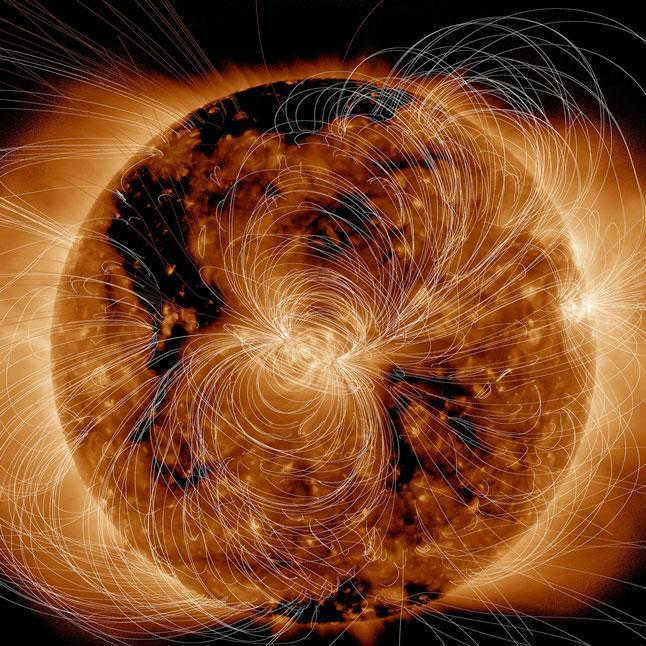
The Sun possesses a magnetic field, with scientists identifying both a global field and numerous local fields.
The global field undergoes cyclical changes, with its strength fluctuating every 11 years in correlation with variations in sunspot frequency. This cyclic phenomenon, known as the “Schwabe cycle,” was first observed in the 19th century by a scientist named Schwabe, who noticed the periodic changes in the number of sunspots on the Sun’s surface. It was later discovered that these changes were connected to fluctuations in the convective transport zone and the magnetic field. In the early 20th century, it was further understood that the magnetic field’s polarity reverses once per Schwabe cycle. As a result, it takes two 11-year cycles for the magnetic field to return to its original state, giving rise to a 22-year cycle known as the Hale cycle.
Within the Sun, various regions exhibit the presence of small, or local, magnetic fields. These localized fields can be thousands of times stronger than the global field, although they typically only last for a few tens of days. These local fields are particularly prevalent in the vicinity of sunspots. This is because sunspots serve as focal points for the outward projection of magnetic fields originating from the inner regions of the Sun.
The Sun’s journey through life
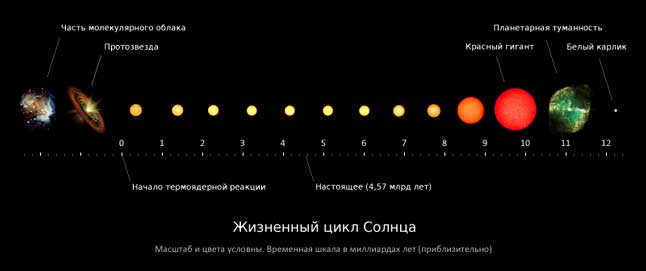
Scientists have estimated the age of the Sun to be around 4.5 billion years. It originated from a cloud of gas and dust that slowly condensed due to its own gravitational force. The planets and most other celestial bodies in the solar system also formed from this cloud. As the density of the cloud’s core increased, along with the temperature and pressure, a thermonuclear reaction ignited, giving birth to the Sun.
Over time, as hydrogen burns out, the core of the star will shrink while the star as a whole will grow larger in size. Once 6.4 billion years have passed, the core will have depleted its hydrogen supply, causing the star’s radius to increase to 1.59 times its current size. Within 700 million years, the star will expand even further, reaching a radius 2.3 times larger than its present-day size.
As temperatures continue to rise, the star’s thermonuclear reactions will no longer occur solely in the core, but also in its outer shell. As a result, the star will rapidly expand, with its outer layers extending all the way to the Earth’s orbit. However, during this phase, the star will lose a significant portion of its mass (28%), which will cause our planet to shift to a more distant orbit. For a period of 10 million years, the Sun will be classified as a red giant.
Following an increase in core temperature to 100 million degrees, an active helium burning reaction, known as “helium flash,” will commence. The size of the star will decrease to 10 times its current radius. The helium burning process will last for approximately 110 million years, at which point the star will expand once again and transform into a red giant. This phase will endure for around 20 million years.
As a result of fluctuations linked to variations in the Sun’s temperature, its outer layers will separate from the core and create a planetary nebula. The core itself will transform into a white dwarf, an entity that will have a size comparable to that of the Earth and a mass equivalent to half of the current solar mass. Subsequently, this dwarf, composed of carbon and oxygen, will gradually cool down. No thermonuclear reactions will occur within the white dwarf, thus with the passage of time (over tens of billions of years), it will evolve into a black dwarf – a cooled, dense mass of matter. At this stage, the Sun’s evolutionary process will come to an end.
Orbit and position of the Sun within the Milky Way Galaxy
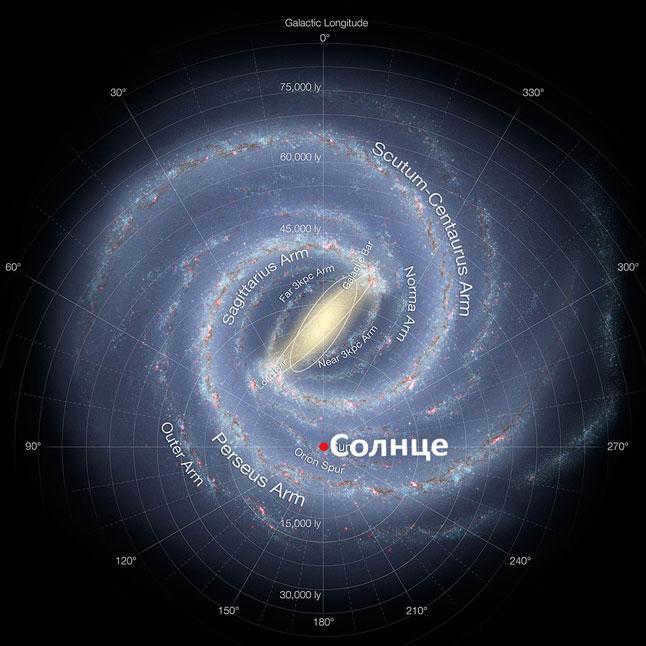
The Sun, along with the entire solar system, orbits around the center of the Milky Way, which contains a massive black hole. The distance between our star and the black hole is approximately 26 thousand light-years. It takes around 225-250 million years for the Solar System to complete one revolution. The Sun’s speed relative to the galactic center is about 225 km/s.
Currently, the Sun is located in the Orion arm of the Milky Way. We are fortunate that the Solar System is positioned in this particular region. This is because the rotational speed of our system closely matches that of the spiral arms in the galaxy. As a result, our system avoids falling into the arms, unlike many other stars that occasionally do. The spiral arms emit powerful radiation that could potentially eradicate all life. If the Sun were in a different orbit, it would periodically encounter the spiral arms, leading to the “sterilization” of life on Earth.
Investigating the Sun
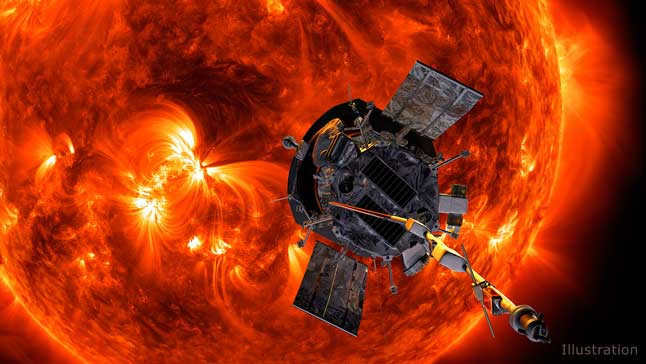
In the past, the Sun was regarded as a divine entity that provided illumination to humanity. Ancient astronomers believed that our star was just one of the planets, alongside the Moon. As a result, they often named the days of the week in homage to these celestial bodies. Even today, in English, Sunday is referred to as “Sunday,” signifying “the day of the Sun.” It was in 800 BC that the Chinese first observed sunspots on the Sun.
In 1672, D. Cassini successfully calculated the distance to the luminary with great precision. To accomplish this, he determined the position of Mars in the sky both in Paris and Cayenne, South America. The result obtained was a value of 140 million kilometers.
During the 19th century, physicists initiated the study of sunlight’s spectrum. This innovative method allowed them to identify the star’s chemical composition. In 1868, a previously unknown element to mankind was discovered within the luminary, and it was named helium.
The origin of the energy emitted by the Sun remained a perplexing mystery for scientists. Various erroneous theories arose, suggesting that the star was heated by meteorites colliding with it or by gravitational compression. It wasn’t until the discovery of nuclear reactions that physicists were able to propose that the source of solar heat is thermonuclear fusion.
The exploration of the Sun has been closely linked to the advancement of space travel. The discovery of the solar wind was made possible through the use of the Soviet spacecrafts “Luna-1” and “Luna-2” in 1959.
Fascinating Information about the Sun

When it comes to any object that emits heat, it is possible to calculate the power-to-volume ratio. Interestingly, the specific power of the Sun is approximately a thousand times lower than the specific power of the human body! This implies that the immense amount of heat emitted by the Sun is primarily due to its enormous size.
Periodic bursts of solar activity can result in geomagnetic storms. One of the most intense storms occurred in 1859, causing telegraphic communication to cease functioning on Earth and the northern lights to be visible even over Cuba.
The widely accepted theory posits that the Sun originated from a cloud of gas and dust. However, the origin of this cloud itself remains a subject of inquiry. Scientists propose that it is a remnant of previous stellar bodies. Chemical analysis has revealed that the Sun is a third-generation star, indicating that its constituent matter was once part of two other stars that have since perished.
While the majority of planets orbit the Sun within the plane of the ecliptic, the Sun’s own equator deviates from this plane, tilted at an angle of 7 degrees. This peculiar discrepancy has yet to be fully explained. One possible explanation is the presence of an additional planet within the solar system, whose orbit lies at an inclination to the plane of the ecliptic. Several observations support the existence of this Ninth Planet, although it is premature to declare its official discovery at this time.





